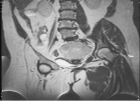Table of Contents
Frequency of cytomegalovirus infection in children with Nephrotic Syndrome
Published on: 14th May, 2019
OCLC Number/Unique Identifier: 8165622333
Introduction and aim: Idiopathic nephrotic syndrome (INS) is the most common type of this disease during childhood. Minimal change nephrotic syndrome (MCNS) is the most common histopathological lesion (80 – 90%) of INS in children and about 90% of patients are steroid responsive, while congenital nephrotic syndrome is disorder that may be caused by several diseases. Intrauterine infections, especially CMV infection, have frequently been incriminated as etiological factors of secondary CNS. The aim of this research was to evaluate the frequency of CMV infection children with active nephrotic syndrome in our pediatric nephrology unit
Patients and methods: This descriptive (cross sectional) study was conducted in pediatric nephrology unit, Zagazig University Hospitals and included 60 patients WITH NS in activity; Participants were subjected to, Full history taking, Clinical examination; general & local, Routine laboratory investigations and Serum samples were tested for HCMV specific immunoglobulin G (IgG) and immunoglobulin M (IgM) using ELISA Kit.
Results: We found 100% of cases were IgG positive and 7/60 cases were IgM positive, There were no statistically significant differences between IgM positive-patients vs IgM-negative patients according to age, sex and first attack or relapsed NS, There were statistically significant differences between IgM positive-patients vs IgM-negative patients in blood laboratory data in decreases in HB (P=0.024) and serum urea nitrogen (P=0.04)
Conclusion: We concluded that serofrequency of cytomegalovirus infection in pediatric nephrology unit, Zagazig university hospitals during follow-up was 12% for cmv IgM and 100% for cmv IgG at ns children patients
A model of the 2014 Ebola virus: Evidence of West Africa
Published on: 2nd May, 2019
OCLC Number/Unique Identifier: 8164049985
Outbreaks of Ebola virus can cause substantial mortality in affected countries. The largest outbreak of Ebola to date is currently underway in West Africa, with 3944 cases reported as of September 5, 2014. For the sake of deriving a better understanding of the Ebola transmission dynamics, we have undertaken to revisit data from the initial spark of origin of the Ebola virus, which occurred in 1976 in Zaire (now Democratic Republic of Congo). By fitting a mathematical process to time series stratified by disease onset, outcome and source of infection, we have managed to estimate several epidemiological quantities, previously admitted to be too challenging to measure, including hospital and infected community contribution infection to the widespread transmission.
Determine seroprevalence and associated risk factors of HBV infection among pregnant women and it relationship with blood transfusion at Hargeisa Group Hospital, Hargeisa, Somaliland
Published on: 19th April, 2019
OCLC Number/Unique Identifier: 8163951694
Background: The measures are being put in place for the management of Hepatitis B virus (HBV) infection in Hargeisa, Somaliland among pregnant women remain the most vulnerable to develop chronic hepatitis. Routine screening in pregnant women is therefore necessary for effective control. However, the performance of the commonly used the HBsAg sero test strips has been available. Also, identifying the risk factors of transmission in pregnant women is importance for the implementation of preventive measures. Hence, the goal of this study was to determining seroprevalence and associated risk factors with HBV infection among pregnant women.
Material & Methods: The study area was carried out at Hargeisa group hospital in Somaliland from May 2018 up to December 2018. The researcher was collected research pregnancy woman data through questionnaire & used diagnostics methods such as Hepatitis B surface antigen (HBsAg) test, antibodies test (HBsAb) by used anti-card test and ELIZA system. In order to find specific full information’s about patients & relationship the associated risk factors with hepatitis B in pregnancy. Data processed and analyzed by used both words and SPSS package. The sample size investigated was 80 patients. Of these, 28 were excluded; among the reasons for exclusion were prior HBV vaccination and known HBsAg sero-positive status.
Aims of Study: The study was designed & aimed to determine seroprevalence and associated factors of HBV infection among pregnant women. To assess and establish if there is significant relationship between blood transfusion and hepatitis B virus at Hargeisa group hospital (HGH).
Results and Discussion: The results in the current study shown that the pregnancy with hepatitis BV and it relation with appeared some symptoms in our study was 24(46.15%) of patients appeared they have cirrhosis symptom, 12(23.08%) of patients answered they have liver failure, while 9(17.31%) of patients appeared yellowish of eyes & skin and 5(9.62%) showed hepatic cancer.
Overall, HBV prevalence: HBsAg was detected in fifteen 15(31.3%) of the participants while all fifteen (100%) had total HBcAb (both IgM and IgG). Of the HBsAg sero-positive women, 26(42.7%) were positive for HBeAg; eight (13.3%) were positive for HBeAb and four 4(9%) were negative for both HBeAg and HBeAb which was close similar with other previous studies. On the other hand, We found identify statistically significant p-values < 0.05 and high relationship between HBV and some demographic and clinical risk factors such as blood transfusions, levels of knowledge about HBV infection in addition to age and marital status.
Conclusion: The results of this study showed that the seroprevalence of HBV infections in pregnant women and it relationship with blood transfusion in Hargeisa Group Hospital, Hargeisa, Somaliland is high. However, further studies are needed to assess the role of other demographic and clinical risk. Urgent action is required to improve hepatitis B infection control measures to reduce dependence on blood transfusions and make new policies for treatment of anemia in HGH

If you are already a member of our network and need to keep track of any developments regarding a question you have already submitted, click "take me to my Query."

















































































































































